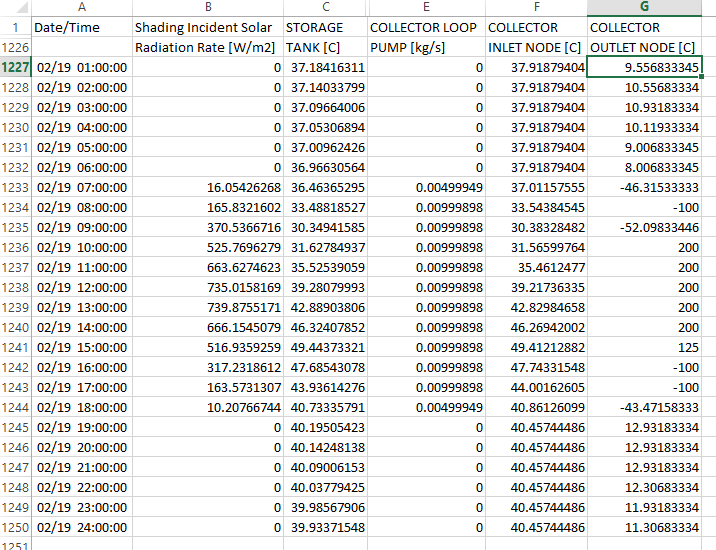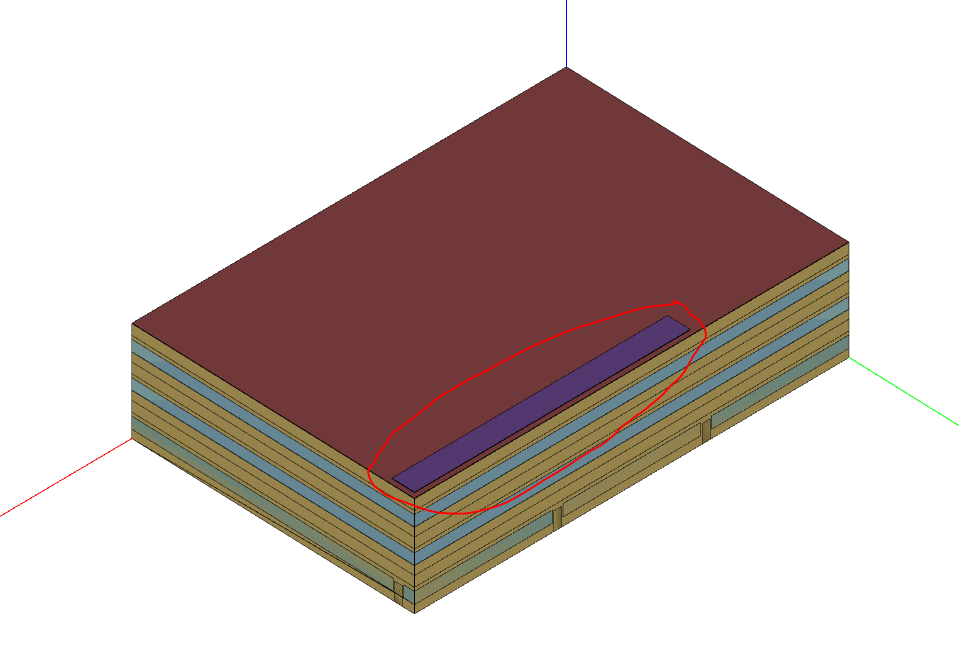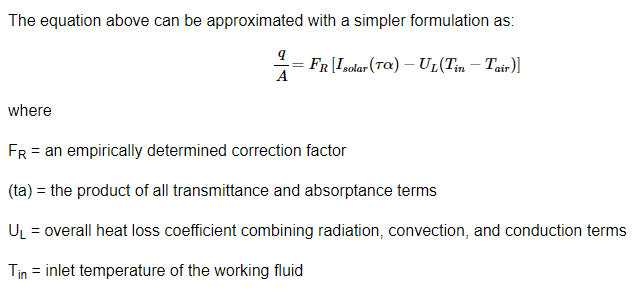I am modeling a SolarCollector:FlatPlate:Water and the temperatures don't seem quite right. Here is a day from the output variables.

I am using some EMS to control the pump for the solar collectors. When the incident solar radiation on the panel is greater than 0, then the pump turns on. I figured that turning the pump on with any amount of sunlight on it would be a good place to start for making sure only heated water went into the storage tank. The temperatures look a little off though. The water coming into the solar panel is the temperature of the storage tank, which makes sense. The water coming out of the panels when sunlight is 200C most of the time, which is also reasonable since I think my flow is low. The temperature at the outlet of the solar panels when the pump is off is also reasonable.
The one that gets me is when the -100C that occurs for more than an hour (I checked with the Output:Variable reporting every timestep) when the pump is on and there is considerable sunlight on the panel.
The only other thing unusual about my model is I combined all the solar panels together since simulating one giant panels is much faster than simulating many regular sized panels.

Here is a google drive link to my files.
I would really like to be able to consolidate the panels like I have, but the -100C is a deal breaker. Am I stretching the model too far by having a very large solar thermal collector, or is there a way I can fix it?





